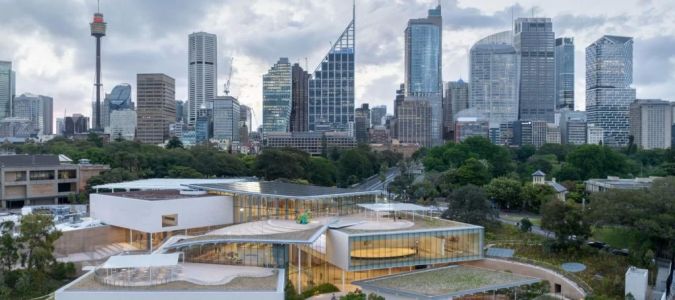The Role of Architects in Creating Pedestrian-Friendly Urban Spaces: Shaping Walkable Cities
- Understanding Pedestrian-Friendly Design
- Why Architects Are Crucial in Urban Design
- Key Elements of Pedestrian-Friendly Urban Spaces
- Examples of Successful Pedestrian-Friendly Spaces
- Challenges and Solutions for Architects
- The Future of Pedestrian-Friendly Urban Spaces
Understanding Pedestrian-Friendly Design
In the modern urban landscape, the concept of pedestrian-friendly design has become a central element of city planning. Pedestrian-friendly urban spaces prioritize accessibility, safety, and comfort for people who move through the city on foot. But what exactly does this mean from a design perspective? It’s about more than just wide sidewalks or crosswalks—it’s about creating a city environment where walking is a pleasant, safe, and easy choice.
Pedestrian-friendly spaces encourage walking not only by making it easier to get from point A to point B but also by integrating features that enhance the walking experience, such as green spaces, public seating, and interactive public art. At its core, pedestrian-friendly design is about making cities more livable and sustainable for everyone.
Why Architects Are Crucial in Urban Design
Architects play a pivotal role in shaping pedestrian-friendly urban spaces. Their expertise in spatial design allows them to create environments that consider not only the aesthetics of a space but also its functionality and accessibility. A pedestrian-friendly space goes beyond just placing a few benches along a sidewalk—it requires thoughtful planning and design to make sure every detail contributes to the overall walkability of a place.
Architects must consider the flow of pedestrian traffic, the relationship between public and private spaces, and how urban infrastructure can be used to prioritize pedestrians over vehicles. Whether it's designing wide sidewalks, integrating public transportation hubs, or ensuring that public spaces are welcoming and safe, architects have a critical role in designing urban environments where pedestrians come first.
Key Elements of Pedestrian-Friendly Urban Spaces
1. Safety
Safety is one of the top priorities when designing pedestrian-friendly spaces. This includes well-marked crosswalks, traffic signals designed for pedestrian convenience, and physical barriers to separate pedestrians from vehicular traffic. Architects must consider how to reduce the risk of accidents by ensuring that all elements of the urban space work together to enhance pedestrian safety.
2. Accessibility
Accessibility is crucial for creating inclusive spaces. Urban areas should be designed to accommodate people of all ages and abilities. This involves ensuring that sidewalks are wide enough for strollers or wheelchairs, that ramps are integrated into buildings and curbs, and that public spaces are accessible to all.
3. Connectivity
A well-connected urban space allows pedestrians to move easily from one area to another without unnecessary detours or obstacles. Urban designers should focus on minimizing the distance between key destinations—such as shops, parks, and public transportation—while also creating pleasant routes that invite people to explore and linger.
4. Aesthetic Appeal
The visual appeal of a space plays an essential role in pedestrian engagement. Well-designed public spaces that incorporate green areas, attractive street furniture, and aesthetically pleasing architecture encourage people to walk. Aesthetics can also influence how pedestrians interact with their environment, making the experience enjoyable rather than just functional.
5. Sustainability
Incorporating sustainable design principles is also key to pedestrian-friendly urban spaces. This includes using eco-friendly materials, creating green spaces, and ensuring that the space is energy-efficient. Architects help design spaces that not only benefit pedestrians but also contribute to the long-term health of the environment.
Examples of Successful Pedestrian-Friendly Spaces
Many cities around the world are making strides in designing pedestrian-friendly spaces, and architects are at the forefront of these efforts. For example:
1. The High Line in New York City is a former railway track turned into a public park that showcases how urban spaces can be transformed to create inviting, walkable environments. The High Line not only offers a safe pedestrian route through the city but also integrates greenery and art to create a space people want to walk through.
2. Barcelona’s Superblocks are another example of pedestrian-first urban design. By restricting traffic in certain parts of the city and transforming them into car-free zones, Barcelona is prioritizing pedestrian movement and creating healthier, more vibrant public spaces.
Challenges and Solutions for Architects
Despite the clear benefits, creating pedestrian-friendly urban spaces comes with challenges. One of the biggest obstacles is overcoming car-centric urban planning that prioritizes vehicles over pedestrians. Many cities are designed with the car as the focal point, which makes redesigning spaces to favor pedestrians more difficult.
Architects face the challenge of working within these existing urban frameworks while also advocating for pedestrian-friendly policies. Solutions often involve careful negotiation with city planners, policymakers, and other stakeholders to create spaces that balance the needs of pedestrians, vehicles, and businesses. Architects can also employ innovative design techniques to make the most of limited space, such as narrowing streets, introducing more pedestrian crossings, or repurposing underutilized areas for public use.
The Future of Pedestrian-Friendly Urban Spaces
The future of urban planning is focused on creating cities that are more walkable, sustainable, and people-centric. Architects will continue to play a critical role in shaping these spaces by developing innovative solutions that enhance the pedestrian experience. As cities become more densely populated and the impact of climate change becomes more evident, designing pedestrian-friendly urban spaces will be key to creating resilient, thriving communities.
Architects will also leverage new technologies and materials to make urban spaces even more pedestrian-friendly. Smart city designs, which integrate technology with urban infrastructure, will offer new opportunities for improving the pedestrian experience through features like automated traffic systems and interactive public spaces. Ultimately, the goal is to make urban areas more livable, enjoyable, and accessible for everyone—on foot.
Want to learn more about how architects are shaping the cities of tomorrow? Visit 10 Jay Street to explore the latest architectural projects and discover how urban spaces are being transformed to prioritize pedestrians.









